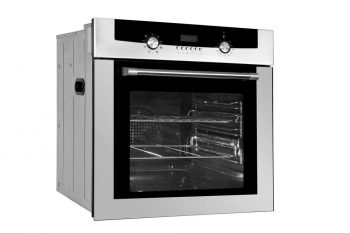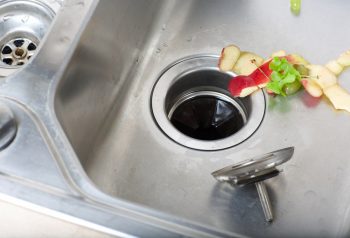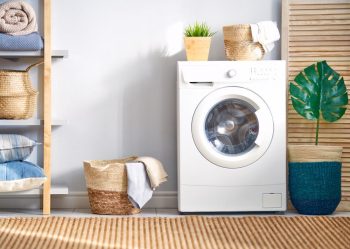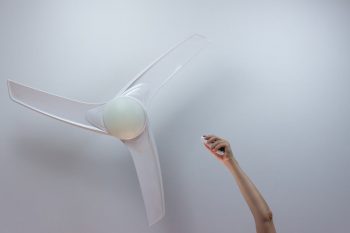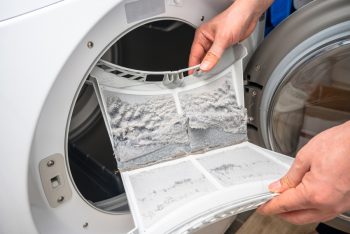
When you purposefully purchase a tankless water heater, the last thing you expect is for the machine to stop providing hot water when you need it.
To understand why your tankless water heater doesn’t always perform as you expect it to, it’s important to know how they work and what you can do to make yours more efficient.
These are the reasons that your tankless water heater may be struggling to provide hot water on demand, as you expect it to:
- Your water pressure is too low.
- Your plumbing is damaged or faulty.
- Your heater is too small.
No one wants to wait for their shower water to heat up after spending money on a product they believe provides instant hot water, so don’t forget to look over this post for ways to improve your tankless water heater’s functions.
Beyond knowing why your tankless water heater isn’t doing its job and heating your cold water, it’s important to know how they work and when to call a plumber.
5 Ways To Fix the Problems
You won’t be able to fix your tankless water heater until you know what’s causing it not to head up properly. Each method is accompanied by the issue causing a water heater to give out cold water.
1. Buy a New Heater – Your Heater Is Too Small
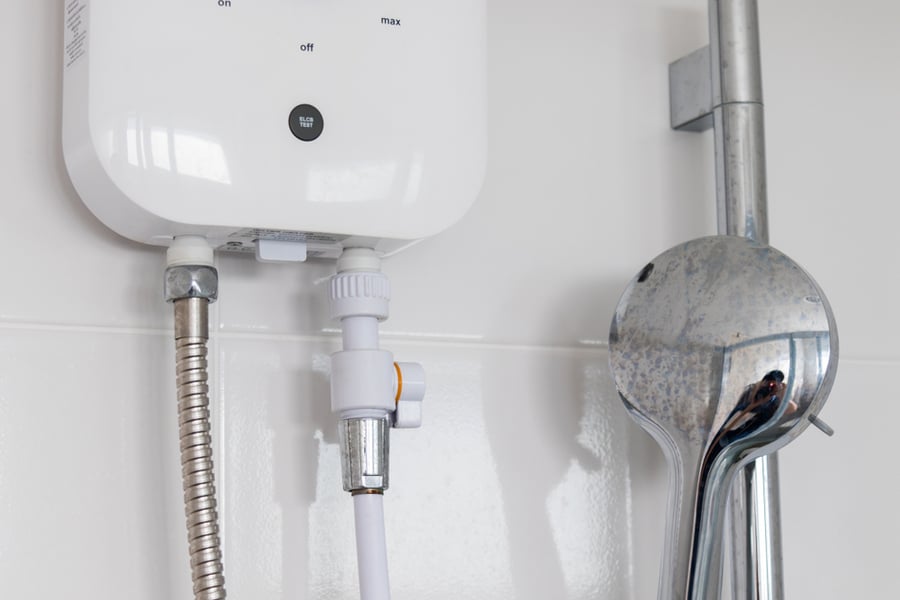
In some cases, the issue is that the heater is too small for the property that it’s in. The downside of this being the issue is that you’re never going to see any positive changes in the time it takes for hot water to appear in your home.
Suppose it’s simply too inconvenient to wait for the water to heat up (which is understandable because you probably brought a tankless water heater in the first place). In that case, you might consider returning/exchanging/buying a new heater.
Alternatively, you can buy a second heater or limit the use of some of the fixtures in your home.
2. Your Gas Line Isn’t Supporting Your Heater – Extend the Line
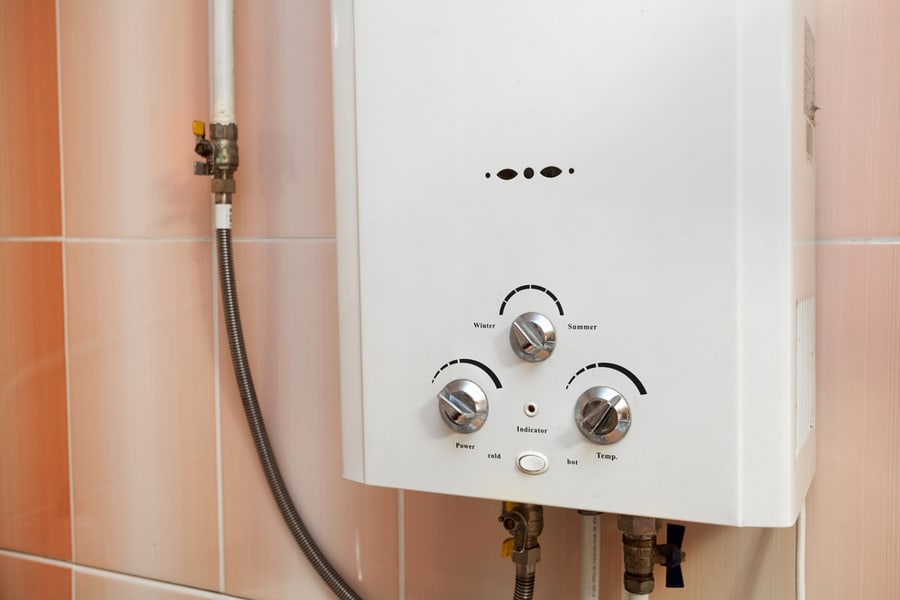
This is a slightly more complicated issue. First, you must extend your gas line to include your tankless water heater during installation.
An appropriate size for your gas line is 1″ if you’re using a heater like this. If your gas line isn’t big enough, your heater may fail to function.
3. Sudden Cold Water Interruption – Your Heater Is Delayed When Heating

It’s unpleasant to turn on your hot water taps and get a rush of warm water followed by cold water before it starts warming up again.
This is usually leftover warm water from the previous use, which is why you get that blast of icy water in between.
What’s happening here is your heater is struggling to warm up the water fast enough, so you’re getting leftover water and cold water before the heater kicks in.
Some tankless water heaters have a feature to reduce this event, but it is very common and, unfortunately, not a fixable issue.
4. The Water Filter Is Clogged – Check the Inlet
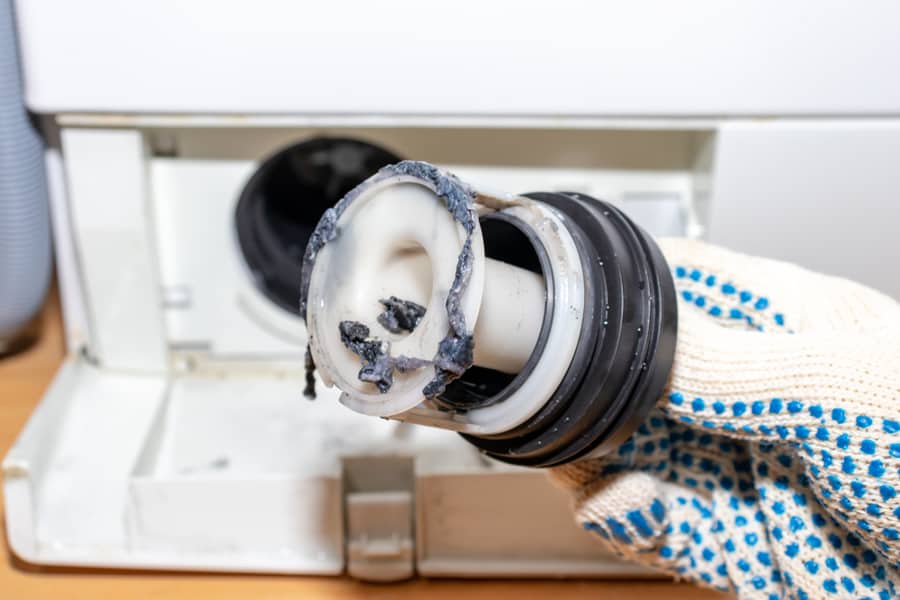
For households experiencing tepid water, it’s worth having a quick look at the cold water inlet. This little, plastic connective part allows cold water into the heater.
When blocked, which happens naturally over time, water can no longer freely enter your heater. When that happens, you get cold water.
To fix this issue, take the connection out and clean or replace it. Only take out the cold water inlet once you’ve identified and ensured that you have the correct part of the heater.
The cold water inlet is located on the outside of the heater. It’s a small plastic piece that connects the cold water supply to the heater.
Do not take apart your heater to find this connector. Doing so may void any warranty you have, or you may damage your heater.
5. Your Heater’s Heat Exchanger Is Blocked – Contact a Plumber
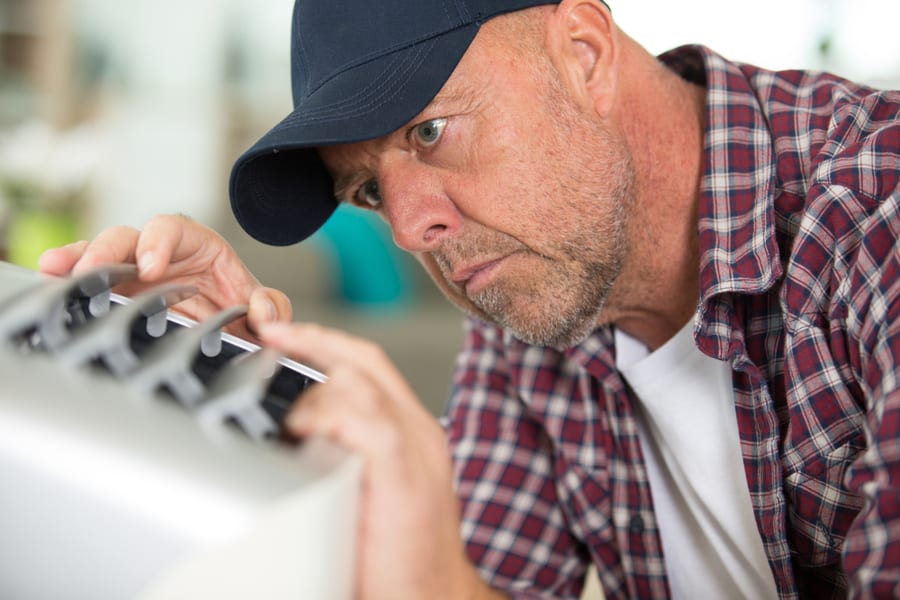
If you live in an area with hard water, minerals can build up on the parts of your tankless system. This can then rust the heater’s pipes and damage the part that heats your water.
You should be flushing your heater regularly to avoid this if you know that your residence is in an area where mineral build-up is common.
If you suspect mineral deposits are to blame for your lack of hot water, you’ll need to call a plumber. But, unfortunately, this is not something you can fix yourself.
How Does a Tankless Hot Water Heater Work?
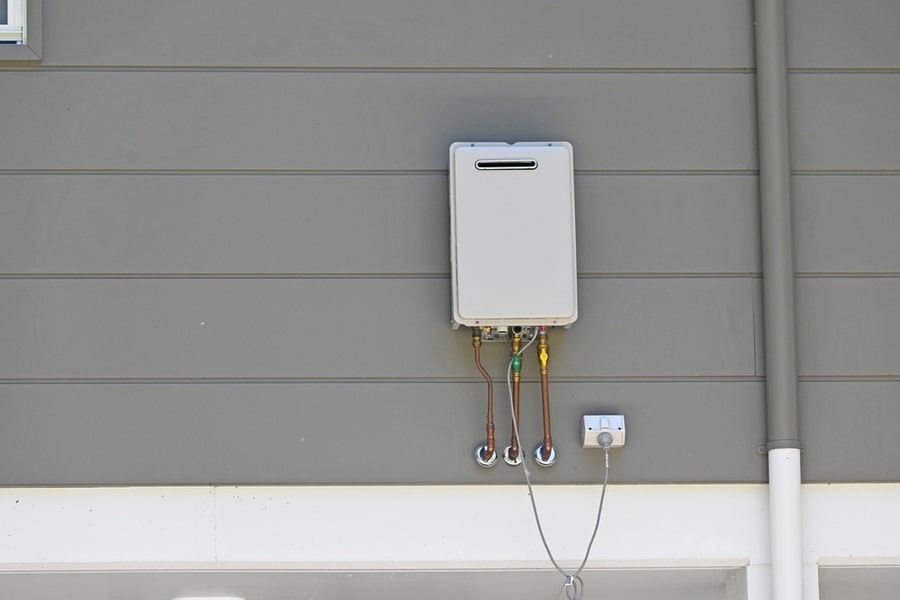
A tankless water heater does not store readily heated hot water as tanked devices do. However, the average tankless heater can store up to 50 gallons of water, which heats quickly upon activation.
This saves energy because the water in the tank doesn’t need to be kept hot all the time. Tankless heaters will only heat your water when you turn on a hot tap or your shower in the warm settings that it has.
Despite being called “instant” heaters, they take a few seconds to a couple of minutes to heat the water from your taps. The time it takes to heat the water is based on a few things, including:
- Any plumbing issues.
- The size of your heater.
- The age of your heater.
- The condition of your heater.
- Rust, mineral deposits, and damage on your heater or plumbing.
- Plumbing crossovers.
Depending on the issue affecting your heater, you might consider looking at its internal workings or fixing the problem yourself. This is fine, as long as it’s one of the simpler issues that doesn’t require a plumber.
You should contact a plumber in these instances:
- Your tankless heater isn’t heating water up at all.
- You live in a hard water area and never flushed your heater.
- You’ve noticed that your plumbing has been damaged or appears rusty/corroded.
- Your pipes appear to have mineral deposits on them.
- You suspect that your gas line size is incorrect.
If an incorrect gas line size is incorrect, always call a plumber to check the issue and upgrade your gas lines to support your heater better.
Cold water enters your heater from the bottom of the system through the cold water inlet. This water moves through the heater, heating up as it goes, and then comes out through the pipes it’s being directed to.
When you turn off your hot water taps, the heater will stop heating the water and naturally cool down.
Takeaway
There are many reasons that the cold water going through your heater is still coming out cold, despite the burner coming on when you turn on a hot tap.
Before you panic, give the cold water some time to heat up. If it’s still coming out cold after a few minutes, it’s time to troubleshoot your tankless water heater and plumbing to find the issue.
When in doubt, always contact a plumber. The last thing you want is to mess around with your home’s plumbing and accidentally make the situation worse or damage something.
Frequently Asked Questions
How Do I Tell if My Water Pressure Is Too Low?
Low water pressure is one of the many reasons your tankless water heater could struggle to provide hot water. Unfortunately, it’s very common and happens in water-heating devices.
You should be able to fix the water pressure yourself, but you should refer to your heater’s manual to complete this task.
If the problem is low water pressure, you’ll notice that the burner for your water heater shuts down soon after you turn the hot water on to activate it, or it doesn’t turn on at all.
Is My Plumbing the Reason My Water Won’t Heat Up?
It could be a plumbing issue rather than an issue with your heater. However, plumbing issues are common causes of tankless water heater problems.
A quick way to test your plumbing to see if that’s the issue is to turn off your cold water supply entirely and turn on all the taps in your home.
If 10 minutes pass and there’s still water running out of your taps, you have a plumbing crossover.
Check the condition of your mixing valve and your faucets, and look for any damaged plumbing in your home. Ideally, call a plumber.



